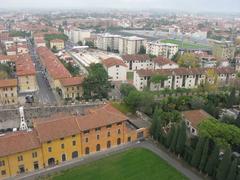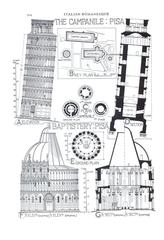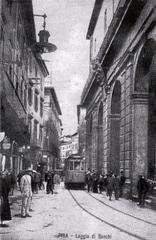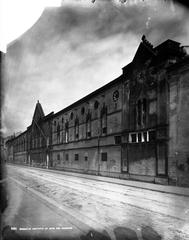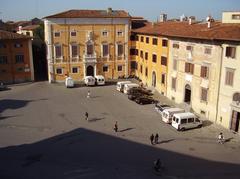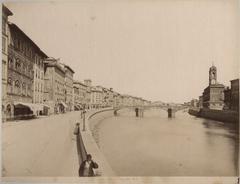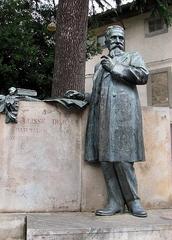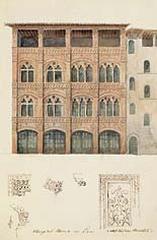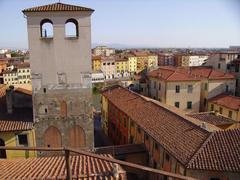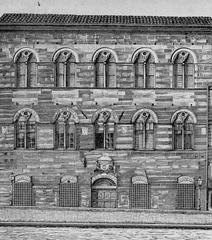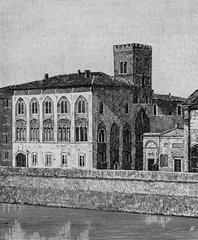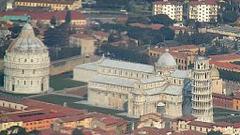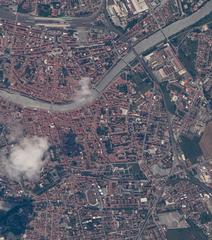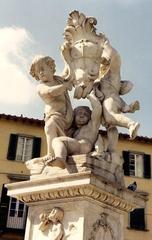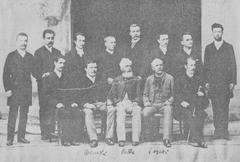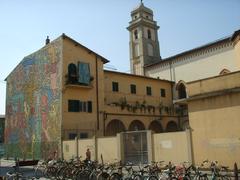Visiting Orto Botanico in Pisa: Hours, Tickets, and Tips
Date: 18/07/2024
Introduction
Welcome to the Orto Botanico di Pisa, a historic gem nestled in the heart of Pisa, Italy. As one of the oldest botanical gardens in the world, founded in 1543, it stands as a testament to centuries of botanical passion and scientific innovation. This guide aims to offer an in-depth exploration of the garden’s rich history, unique features, and practical visitor information, ensuring you make the most of your visit to this living museum of the plant world. From its establishment by the renowned botanist Luca Ghini to its current status as a center for botanical research and education, the Orto Botanico di Pisa seamlessly blends historical legacy with modern scientific pursuits. Whether you’re a history enthusiast, a plant lover, or a curious traveler, this guide will provide you with all the information you need for a memorable experience at the Orto Botanico di Pisa.
Table of Contents
- Introduction
- A History Rooted in Science and Discovery
- Visitor Information
- Nearby Attractions
- Travel Tips
- FAQ
- Conclusion
A History Rooted in Science and Discovery
The Orto Botanico di Pisa, or Botanical Garden of Pisa, boasts a history as vibrant and fascinating as the plant life it cultivates. Founded in 1543, it holds the distinction of being one of the oldest botanical gardens in the world, predating even the famed Kew Gardens in London. Its establishment marked a pivotal moment in the evolution of botany as a scientific discipline, moving away from medicinal plant studies towards a more comprehensive understanding of the plant kingdom.
The Birth of a Garden - Luca Ghini and the First Steps
The driving force behind the garden’s creation was Luca Ghini, a renowned botanist and professor at the University of Pisa. Recognizing the need for a dedicated space to study and cultivate plants for scientific purposes, Ghini petitioned Cosimo I de’ Medici, the Grand Duke of Tuscany, for its establishment. The Duke, a known patron of the arts and sciences, granted Ghini’s request, and in 1543, the Orto Botanico di Pisa was born.
Initially located near the arsenal on the Lungarno, the garden’s first home was short-lived. Flooding from the Arno River proved detrimental, forcing a relocation in 1544 to a site near the Convent of St. Marta. This move, however, proved temporary as well.
Finding a Permanent Home - A Legacy Begins
The garden found its permanent and current location in 1563, thanks to the vision of botanist Andrea Cesalpino. Cesalpino, a successor to Ghini and a pivotal figure in botanical taxonomy, recognized the limitations of the St. Marta location. He orchestrated the garden’s move to its present site near the Piazza Knights’ Square, a plot of land owned by the Order of the Knights of St. Stephen.
This move proved instrumental in the garden’s development. The new location offered more space, better soil conditions, and proximity to the University, fostering a closer relationship between the garden and academic research.
A Legacy of Innovation - Shaping Botanical Understanding
Over the centuries, the Orto Botanico di Pisa flourished, becoming a hub for botanical research and education. It played a crucial role in introducing and cultivating exotic plant species from around the globe, brought back by explorers during the Age of Discovery. The garden’s collection expanded rapidly, encompassing a diverse range of plants, from medicinal herbs to rare and exotic specimens.
The garden’s directors, often leading botanists of their time, made significant contributions to the field. Michele Mercati, director in the late 16th century, enriched the garden with plants from the East, while Paolo Boccone, in the 17th century, focused on collecting plants from across Europe.
From Herbarium to Arboretum - Expanding Horizons
The 18th century saw the construction of the Botanical Institute, further solidifying the garden’s role as a center for scientific study. This period also witnessed the establishment of the herbarium, a collection of preserved plant specimens used for research and identification.
The 19th century brought about the creation of the arboretum, a dedicated area for cultivating trees and woody plants. This expansion reflected the growing interest in forestry and the study of trees.
Enduring Legacy - A Living Museum of the Plant World
Today, the Orto Botanico di Pisa stands as a testament to centuries of botanical passion and scientific inquiry. It houses over 6,000 plant species from around the world, meticulously arranged in thematic collections. Visitors can explore the diverse ecosystems represented, from the arid landscapes of the succulent collection to the lush greenery of the aquatic plant section.
The garden’s historical buildings, including the 16th-century institute and the elegant greenhouses, add to its charm, offering a glimpse into the evolution of botanical science. The Orto Botanico di Pisa is not merely a garden; it is a living museum, preserving the history of botany while continuing to inspire future generations of plant enthusiasts and scientists.
Visitor Information
- Opening Hours: The Orto Botanico di Pisa is open from 8:30 AM to 5:00 PM, Monday to Friday. Weekend hours may vary, so it’s best to check their official website before planning your visit.
- Tickets: Entry fees are €4 for adults, €2 for students, and free for children under 6 years old. Tickets can be purchased online or at the entrance.
- Accessibility: The garden is wheelchair accessible, with pathways designed for easy navigation.
Nearby Attractions
- Piazza dei Miracoli: Just a short walk from the garden, this iconic square is home to the Leaning Tower of Pisa.
- Museum of Natural History: Explore more scientific wonders at this nearby museum.
- Pisa Cathedral: Another must-visit attraction in the area, known for its stunning architecture and historical significance.
Travel Tips
- Best Time to Visit: Spring and early summer offer the most vibrant plant displays. Early mornings or late afternoons are ideal for avoiding crowds.
- Guided Tours: Take advantage of guided tours to learn more about the garden’s unique collections and history. Tours are available in multiple languages.
- Photography: The garden offers numerous picturesque spots perfect for photography. Don’t miss the succulent collection and the aquatic plant section for stunning shots.
FAQ
- What are the Orto Botanico di Pisa’s visiting hours? The garden is open from 8:30 AM to 5:00 PM, Monday to Friday. Weekend hours may vary.
- How much do tickets cost? Tickets are €4 for adults, €2 for students, and free for children under 6 years old.
- Is the garden accessible for people with disabilities? Yes, the garden is wheelchair accessible with pathways designed for easy navigation.
Conclusion
The Orto Botanico di Pisa offers a unique and enriching experience that bridges the past and the present. Its extensive collection of over 6,000 plant species, historical buildings, and thematic sections provide a comprehensive overview of botanical diversity and scientific inquiry. The garden’s accessibility features, nearby attractions, and practical visitor information ensure a comfortable and enjoyable visit for all. By exploring the Orto Botanico di Pisa, you are not only witnessing the beauty of the plant kingdom but also engaging with a site of immense historical and cultural significance. As you wander through its pathways, remember that you are part of a legacy that dates back to the 16th century, continuing to inspire future generations of botanists and nature enthusiasts. Plan your visit today and immerse yourself in the serene and educational environment of the Orto Botanico di Pisa.
References
- Exploring the Orto Botanico di Pisa - History, Visiting Hours, and Tickets, 2024, Author source url
- Discover the Orto Botanico di Pisa - Visiting Hours, Tickets, and Unique Features, 2024, Author source url
